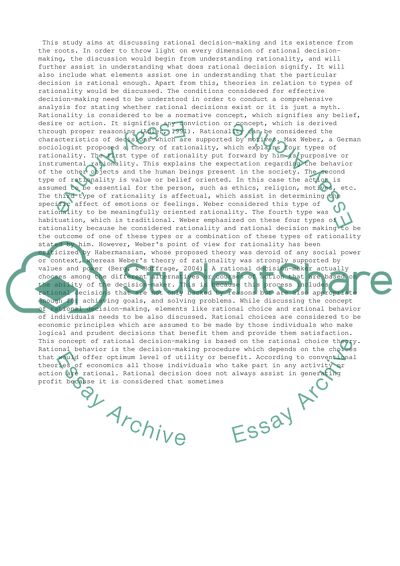Cite this document
(“There is no such thing as a rational decision. Discuss this assertion, Essay”, n.d.)
Retrieved from https://studentshare.org/business/1479682-there-is-no-such-thing-as-a-rational-decision
Retrieved from https://studentshare.org/business/1479682-there-is-no-such-thing-as-a-rational-decision
(There Is No Such Thing As a Rational Decision. Discuss This Assertion, Essay)
https://studentshare.org/business/1479682-there-is-no-such-thing-as-a-rational-decision.
https://studentshare.org/business/1479682-there-is-no-such-thing-as-a-rational-decision.
“There Is No Such Thing As a Rational Decision. Discuss This Assertion, Essay”, n.d. https://studentshare.org/business/1479682-there-is-no-such-thing-as-a-rational-decision.


